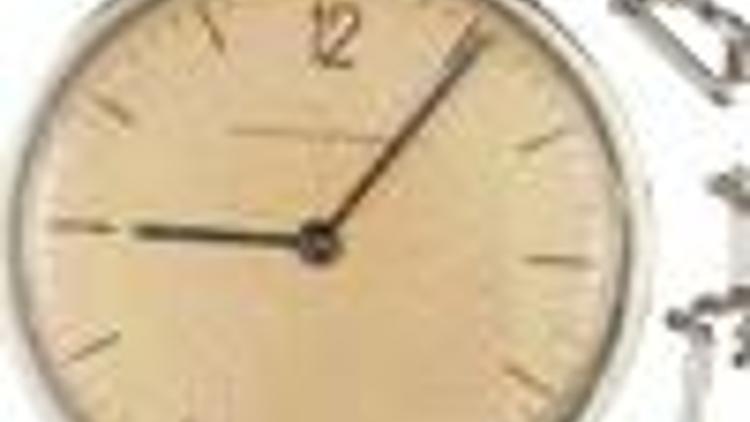A brief history of the measurement of time
Güncelleme Tarihi:

ISTANBUL - ’The Visible Face of Time’ is a newly opened exhibition at Istanbul’s Yapı Kredi Cultural Center Vedat Nedim Tör Museum. Focusing on the concept of time in the Ottoman Empire, the exhibition features over a hundred timepieces from the ancient times to the present
A journey through the history of telling the time is on display at the Beyoğlu Vedat Nedim Tör Museum on the second floor of the Yapı Kredi Cultural Center.
Under the watchful eye of a special security company, over a hundred pieces of time-telling paraphernalia, dating back to the beginning of recorded time, have been collated from collections belonging to the Istanbul and Ephesus archaeology museums, from Topkapı and Dolmabahçe palaces, the Turkish Naval Museum and the Naval Forces Command.
Although the exhibition, which opened Mar. 11 as part of the museum’s "Ethnography and Technology" series, displays various pieces from ancient times, it mainly focuses on the concept of time in the Ottoman Empire and also Turkish watch and clockmakers. The exhibition will be open until June 28.
The most original gift from Napoleon to Sultan Abdulaziz
One of the most original pieces in the exhibition is a clock that Napoleon gave to Sultan Abdulaziz. Composed of a golden-colored miniature gun carriage on a marble stand, a small amount of gunpowder in the gun explodes from the heat of the sun reflected off the oval mirror covering it, telling the time.
Speaking to Hürriyet Daily News & Economic Review, Şennur Şentürk, director of the museum and curator of the exhibition, said: "We might have focused the exhibition on Turkish watchmakers only but we preferred to extend from the general to the universal." The exhibition also features pieces from Turkish timekeepers Mustafa Şemi, Mehmet Şükrü, Ahmet Eflaki Dede, Derviş Yahya and Şeyh Dede.
As well as hourglasses and sundials, Western and Ottoman style timepieces attract a great deal of attention among the works in the exhibition. Ottoman examples of such time pieces are ones adapted from the Western world.
Şentürk said the Ottoman timepiece was based on reading the position of the sun. "Since the setting sun differs everywhere according to geographic longitudes, the Ottoman timepiece differs from city to city. As the days get shorter or longer due to the seasons, the hour of prayer also changes. Therefore, Ottoman timepieces were not the same as Western ones. "The concept of time was only considered in order to determine the times of prayers correctly. A new day begins at midnight on a western-style watch in today’s world. However, for the Ottomans it was midnight whenever the evening prayer was performed, it did not make a difference. It was based on a 12-hour period, which began and ended with the light," she said.
Muezzin’s struggle for power
Şentürk said that clock towers were erected in the Ottoman Empire hundreds of years later than in the West due to religious issues. "The muezzins had power because they announced the time of prayer and they believed that they would lose this power if clock towers were built, so they were against them. For this reason, there were no clock towers until the 19th century."
Şentürk said there were time houses (vakithane) in every district before the clock towers. "People who visited the district used to visit those houses first and set their watches but the most important detail was that every district’s time was different from the other. Therefore, it was impossible to arrange a unity in time. There was no care to bring order to life."

